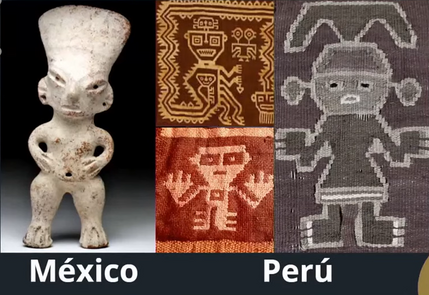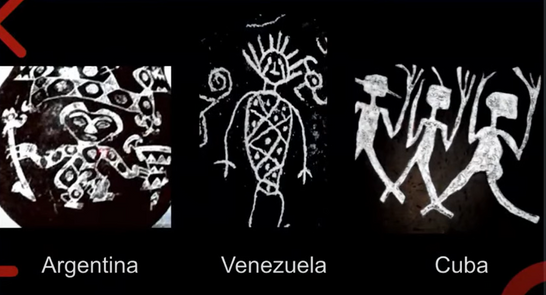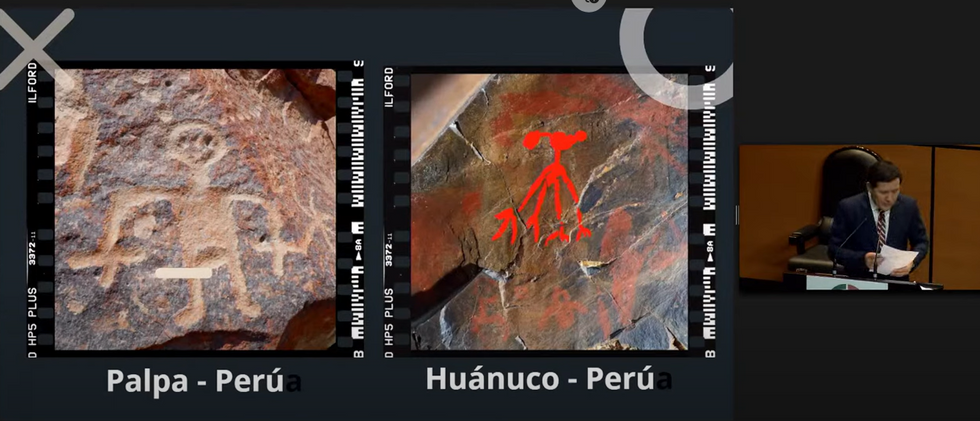Supposed 'Extraterrestrial Mummies' Presented at Public Assembly on UAPs in Mexico
- Dakila News
- Sep 26, 2023
- 4 min read
On September 12th, a public assembly in Mexico focused on the regulation of Unidentified Aerial Phenomena (UAPs) took place, during which two non-human bodies found near the Nazca Lines in Peru were presented.

This presentation sparked numerous controversies on the internet, with the bodies being initially recognized as 'extraterrestrial mummies' based solely on the images and videos released, and suspicions of a hoax arose.
Taking an impartial approach, we aim to shed light on what was presented at the assembly by the study's participants, who repeated their findings multiple times for the audience to form their own conclusions and genuinely investigate the subject at hand.
"In principle, I invite you not to completely trust what I say. Let's focus on the facts and evidence," said Josh Mantilla.
"Start with the hypothesis that everything is false, but investigate closely to draw your own conclusions. This treasure appeared in Peru, but it is a legacy for all of humanity," added José Jaime Maussan.
"We acknowledge that there is still much to discover, and we are open to the scientific community and the world to help us pool our efforts and determine what lies before us," stated José de Jesús Zalee Benítez.
In total, approximately 20 corpses were unearthed in Peru in 2017. These bodies were informally discovered by grave robbers in a diatomaceous earth mine located between the cities of Palpa and Nazca.

The diatomaceous earth was considered a crucial factor in preserving the bodies, as it facilitates natural desiccation and prevents the growth of bacteria, fungi, and cadaveric fauna on the site.
However, cadmium chloride (CdCl2), an unnatural substance that needs to be manufactured, was also found at the site. Cadmium is a toxic chemical element that primarily affects the kidneys and bones. Additionally, it is commonly used in preventing corrosion in steel, iron, and other metals.
At the time these bodies were discovered, the Inkarri Institute of Cusco was the first to announce the find. A few years later, in 2019, the National University of Ica in Peru received some specimens for custody and study.
Researcher Josh Mantilla complained that at the time of the discovery, prominent figures in archaeology discredited the findings, alleging fraud. However, Mantilla also points out that these corpses have been at the National University of Ica for four years, and none of those archaeologists bothered to investigate what had been presented.
Since then, the team has conducted numerous examinations and analyses. In an effort to confirm the integrity of the bodies, analyses of the cells in the torso, head, and limbs were performed. Furthermore, the bodies were categorized as humanoid reptiles due to their structural resemblance to humans and the presence of ovoid shapes in the torso of some bodies, suggesting reptilian egg gestation characteristics.

Samples of these alleged eggs were sent to the Inkarri Institute of Cusco and the University of St. Petersburg in Russia. Scientists confirmed that these ovoid shapes were organic materials, reconstructed the embryos three-dimensionally through tomography, and compared them to human fetuses. This study was also replicated in another specimen that also contained ovoid shapes inside.
Additionally, metallic implants were found in three specimens, leading metallurgical engineers to analyze the samples. The results indicated that 85% of the composition was high-purity copper, which they considered typical of pre-Columbian peoples, and osmium, a metal commonly found in telecommunications, satellites, and other applications. Engineers believe this element served a function related to location or biomedicine.
During the assembly presentation, José de Jesús Zalee Benítez, a master in forensic medicine, was present and contributed by providing a detailed description of the anatomy of the specimens in the chamber. Accompanied by biologist José de La Cruz Ríos, both researchers conducted their description based on X-ray results, computed tomography, three-dimensional reconstruction, carbon-14 histology, forensic anthropology, macroscopic and microscopic analyses, DNA analysis, and comparative anatomy.
The complete description is available in the 2-hour and 54-minute footage of the assembly, concluding at the 3-hour and 3-minute mark. In summary, the expert revealed that the bodies were approximately 60 cm tall, with humanoid structures consisting of a head, torso, abdomen, and limbs ending in three-fingered hands and feet. They had pneumatized skulls, providing both lightness and rigidity simultaneously, along with a large intracranial cavity. Straight and linear fingerprints horizontally distinguished them from numerous known species.

Highlighting the three-fingered limbs, which imply the presence of three fingers, the researchers compared this anatomical feature with various images and figures in ceramics, petroglyphs, and paintings dating back tens of thousands of years in places such as Palpa and Huánuco in Peru, Argentina, Cuba, Iran, Venezuela, and other countries.
Concluding the team's presentation, Ricardo Rangel Martínez, an expert in immunogenetics and histocompatibility, presented the DNA analyses and their results. Samples were taken from tissues of the specimen known as Victoria. Due to the informal discovery of these bodies, researchers conducted a pilot study to assess the state of the molecules and address possible alterations and wear.
As a result, they confirmed the presence of degraded DNA and small undegraded molecules, enabling sequencing. The researchers used Next Generation Sequencing (NGS) techniques on bone samples from the neck and muscle tissue from the hip. The most intriguing results came from the muscle tissue, which identified 36.28% of its sequence as 100% contamination, with 63.72% remaining unidentified, meaning they did not correspond to any known species.
These comparisons were conducted using a database tool that allows comparisons with all known genome sequences, comprising 700,000 samples representing at least one species from each taxon. Therefore, the team concluded that these bodies have a probability of over 50% of being non-human entities and a probability exceeding 50% of not matching any known living species on planet Earth.
The team of researchers also emphasized that these studies and results have been published and are available for anyone interested in analyzing them or continuing the research. Some independent researchers, such as Rafael Hungria from the Dakila Ecosystem and historian André de Pierre, conducted a live discussion on the subject and investigated the data presented at the assembly. André highlighted the fact that those discrediting the study had not conducted any research on the specimens. To compare the two viewpoints, a similarly comprehensive study with information and data confirming the fraud would be needed.
Public Assembly in Mexico – full video:
Note: If you want to watch only the commented part, it starts at 2h and 29min and ends at 3h and 14min
DNA analyses and their results:
Tridimensional reconstruction:
References:












